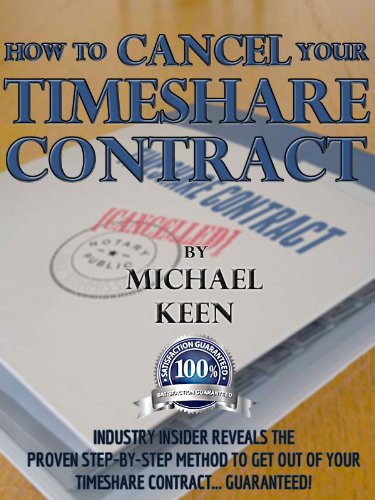Probably among the most confusing features of home loans and other loans is the calculation of interest. With variations in intensifying, terms and other factors, it's difficult to compare apples to apples when comparing home mortgages. Sometimes it seems like we're comparing apples to grapefruits. For instance, what if you want to compare a 30-year fixed-rate home loan at 7 percent with one point to a 15-year fixed-rate home loan at 6 percent with one-and-a-half points? Initially, you need to remember to likewise think about the charges and other expenses related to each loan.
Lenders are required by the Federal Fact in Financing Act to reveal the effective percentage rate, along with the total finance charge in dollars. Advertisement The yearly portion rate (APR) that you hear so much about enables you to make real comparisons of the real costs of loans. The APR is the typical annual finance charge (that includes fees and other loan expenses) divided by the amount obtained.

The APR will be a little higher than the rate of interest the loan provider is charging since it includes all (or most) of the other charges that the loan carries with it, such as the origination cost, points and PMI premiums. Here's an example of how the APR works. You see an ad offering a 30-year fixed-rate home loan at 7 percent with one point.
Easy choice, right? Really, it isn't. Fortunately, the APR thinks about all of the small print. Say you require to borrow $100,000. With either loan provider, that implies that your monthly payment is $665.30. If the point is 1 percent of $100,000 ($ 1,000), the application charge is $25, the processing fee is $250, and the other closing charges amount to $750, then the overall of those charges ($ 2,025) is deducted from the actual loan amount of $100,000 ($ 100,000 - $2,025 = $97,975).
To find the APR, you identify the rates of interest that would relate to a regular monthly payment of $665.30 for a loan of $97,975. In this case, it's really 7.2 percent. So the 2nd loan provider is the better offer, right? Not so quickly. Keep checking out to discover the relation in between APR and origination fees.
When you look for a home, you may hear a little bit of market lingo you're not acquainted with. We've developed an easy-to-understand directory of the most typical home mortgage terms. Part of each regular monthly mortgage payment will approach paying interest to your lender, while another part goes toward paying down your loan balance (also referred to as your loan's principal).
Throughout the earlier years, a higher part of your payment approaches interest. As time goes on, more of your payment goes toward paying down the balance of your loan. The deposit is the cash you pay upfront to acquire a house. In many cases, you have to put cash down to get a home mortgage.
For instance, standard loans need just 3% down, however you'll have to pay a monthly fee (called personal home mortgage insurance) to make up for the little down payment. On the other hand, if you put 20% down, you 'd likely get a much better rate of interest, and you wouldn't have to spend for personal mortgage insurance.
Part of owning a house is paying for residential or commercial property taxes and homeowners insurance coverage. To make it simple for you, loan providers established an escrow account to pay these expenses. Your escrow account is handled by your lender and functions kind of like a checking account. No one makes interest on the funds held there, however the account is utilized to gather cash so your lending institution can send out payments for your taxes and insurance coverage in your place.
Not all home loans include an escrow account. If your loan doesn't have one, you have to pay your real estate tax and property owners insurance costs yourself. Nevertheless, the majority of lending institutions offer this choice because it allows them to make sure the property tax and insurance coverage bills earn money. If your deposit is less than 20%, an escrow account is required.
Remember that the quantity of money you require in your escrow account is reliant on how much your insurance coverage and residential or commercial property taxes are each year. And because these expenses may change year to year, your escrow payment will change, too. That suggests your regular monthly home mortgage payment may increase or decrease.
There are two types of home mortgage interest rates: repaired rates and adjustable rates. Fixed rate of interest remain the exact same for the whole length of your home loan. If you have a 30-year fixed-rate loan with a 4% rate of interest, you'll pay 4% interest till you pay off or refinance your loan.

Adjustable rates are rates of interest that alter based upon the marketplace. The majority of adjustable rate home loans begin with a fixed rates of interest period, which normally lasts 5, 7 or 10 years. Throughout this time, your rates of interest remains the same. After your fixed rates of interest period ends, your interest rate changes up or down once per year, according to the marketplace.
ARMs are right for some debtors. If you plan to move or re-finance prior to completion of your fixed-rate duration, an adjustable rate home loan can offer you access to lower rates of interest than you 'd generally https://danteuobi019.tumblr.com/post/628736718513799168/how-to-get-rid-of-your-timeshare find with a fixed-rate loan. The loan servicer is the business that supervises of providing month-to-month home mortgage statements, processing payments, handling your escrow account and reacting to your inquiries.
Lenders may offer the servicing rights of your loan and you might not get to choose who services your loan. There are lots of kinds of mortgage. Each features various requirements, interest rates and advantages. Here are some of the most common types you might become aware of when you're requesting a mortgage.
You can get an FHA loan with a down payment as low as 3.5% and a credit rating of just 580. These loans are backed by the Federal Housing Administration; this implies the FHA will compensate lenders if you default on your loan. This decreases the danger lenders are taking on by providing you the money; this indicates lending institutions can use these loans to customers with lower credit history and smaller sized down payments.
Standard loans are typically likewise "conforming loans," which suggests they fulfill a set of requirements defined by Fannie Mae and Freddie Mac two government-sponsored business that purchase loans from lending institutions so they can offer home loans to more individuals. Conventional loans are a popular choice for purchasers. You can get a conventional loan with as low as 3% down.
This adds to your regular monthly expenses but enables you to get into a brand-new house earlier. USDA loans are just for homes in qualified rural areas (although numerous homes in the suburban areas qualify as "rural" according to the USDA's meaning.). To get a USDA loan, your home income can't exceed 115% of the area average income.